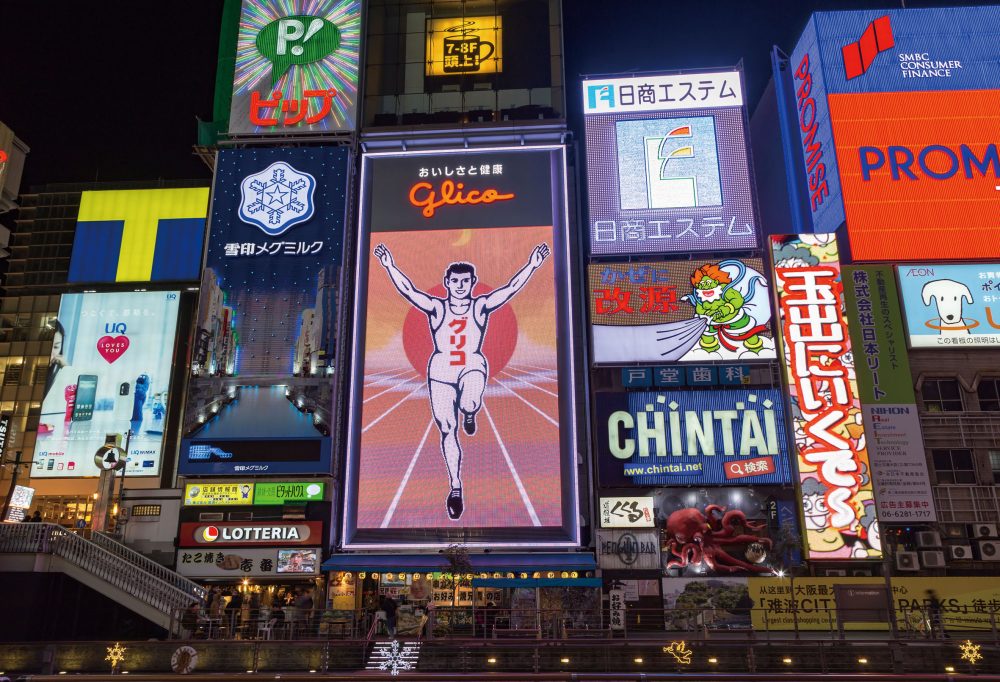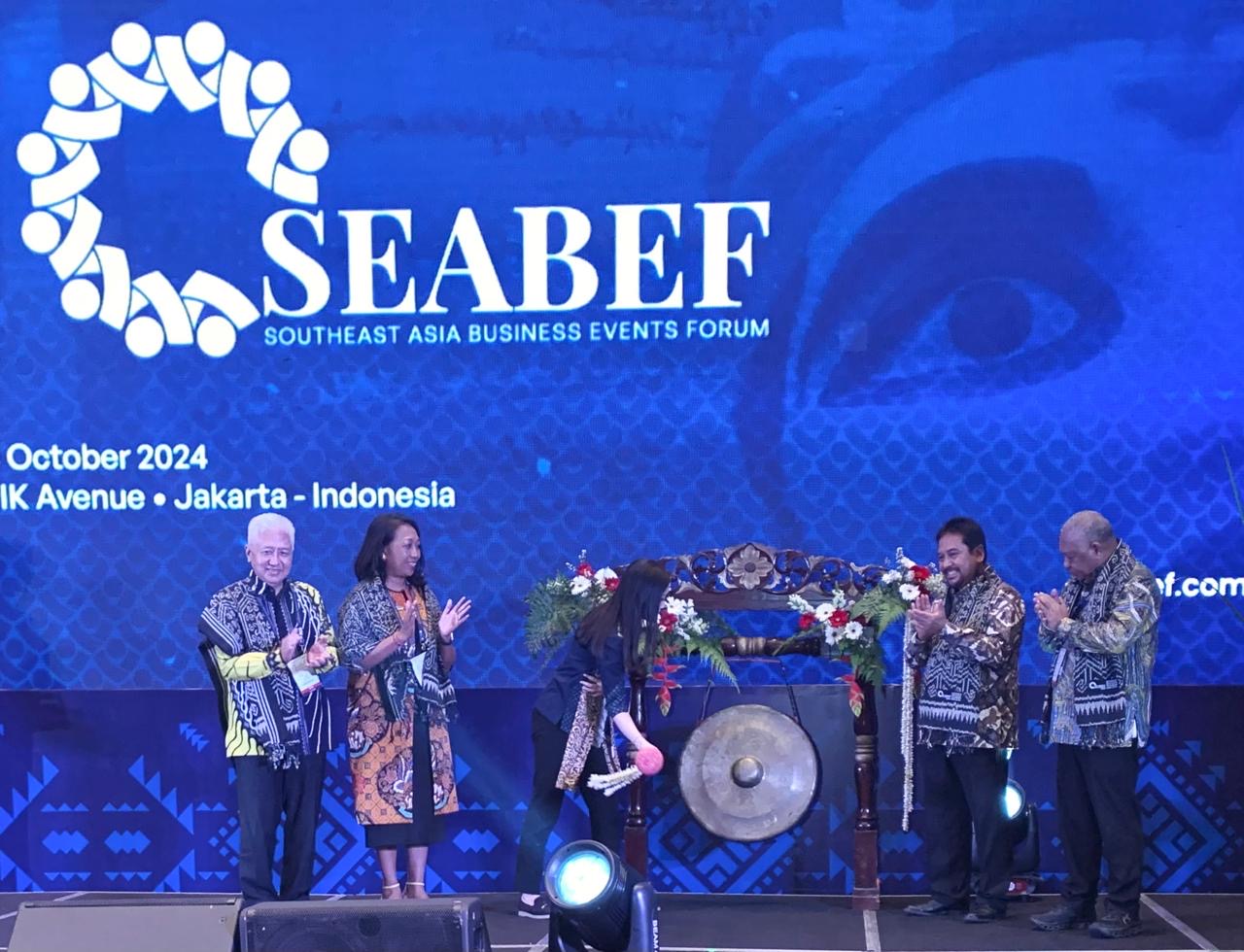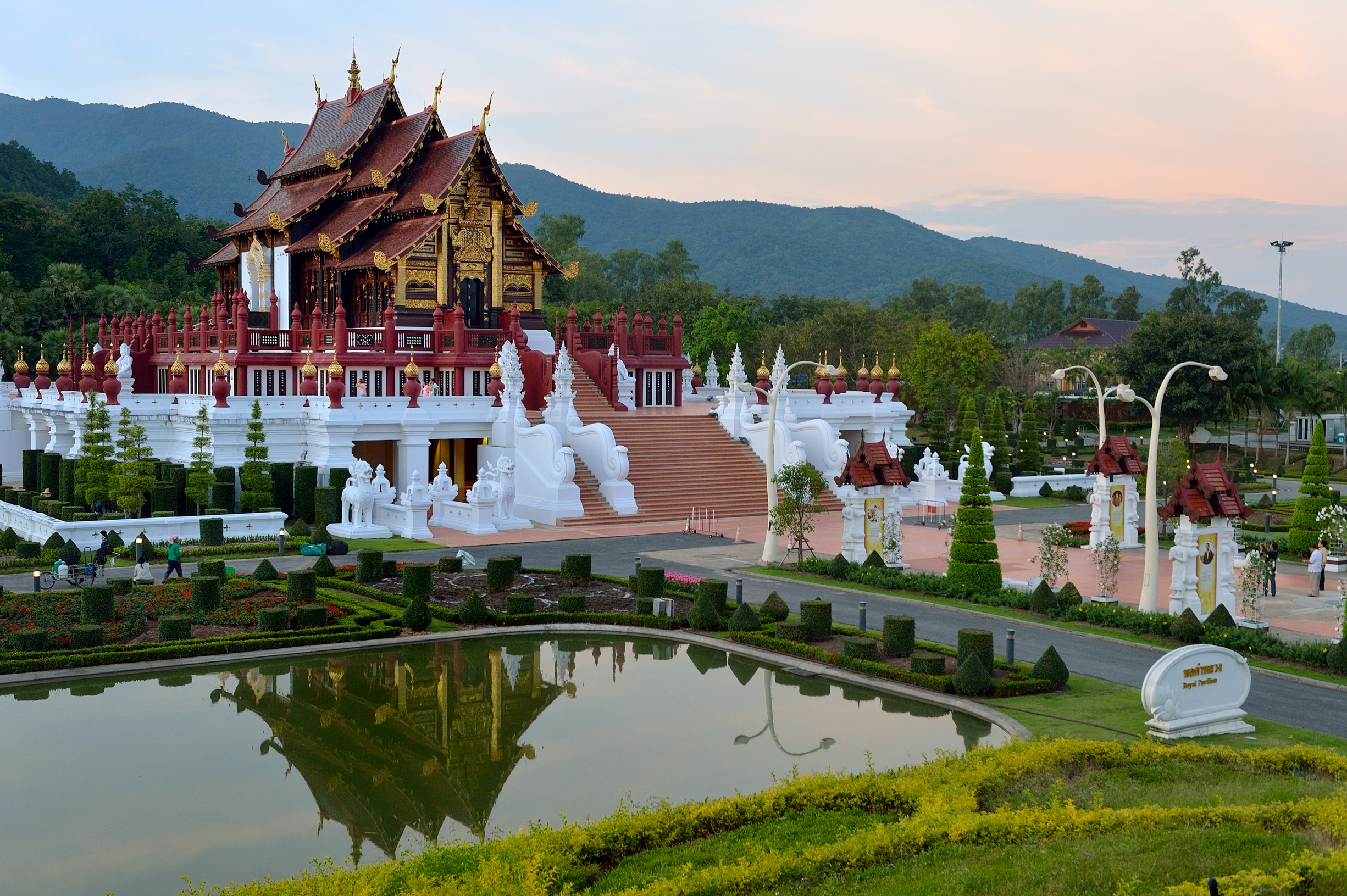After something of a temporary hibernation, Penang’s international meetings and incentives business is about to burst into life once more.
The island, which has been known for centuries as the Pearl of the Orient, is shining again after a relatively quiet spell. Last September, the Shangri-La’s Rasa Sayang Resort & Spa re-opened. This premier resort destination hopes to entice an even greater share of the niche events business than it did in the past.
Two other properties which will soon be making their appearance are The Hard Rock Hotel, currently the Casuarina Hotel, and former Mutiara Beach Resort, which will be re-branded into an InterContinental property by the end of 2008.

Another welcome boost to the tourism industry is the US$4 billion being pumped into Penang for new infrastructure by the Malaysian Government by 2010. On the drawing board are a monorail, an inner-ring road, a second bridge linking the island to the mainland, and improved tourism infrastructure.
But if Penang can offer the luxuries and necessities of the modern world, part of its enduring charm is its seamless blend of Asian, Eurasian and Western cultures reflecting the island’s important trading past and contemporary business and manufacturing importance.
The capital Georgetown provides a perfect example. Modern buildings sit aside Malay mosques, Indian temples and Chinese shrines. A walk through the streets is an aromatic and gastronomic experience in itself, with the island’s famed hawker food competing with the best any five-star hotel could offer.
The architecture is some of the best preserved in South East Asia. Due to rent-control legislation many pre-war houses survived the onslaught of the bulldozer and property developer, providing an ambience that peninsular Malaysian cities and also Singapore largely lost.

As a result, Penang offers many unique venues for special events. Here are some highlights:
Pinang Peranakan Mansion
www.pinangperanakanmansion.com.my
The Peranakans, also known as the Babas and Nyonyas, were a prominent community of Chinese unique to the Straits Settlements (Penang, Malacca and Singapore). Adopting selected ways of the local Malays and later, the colonial British, the Peranakans created a unique lifestyle and customs which left behind a legacy of antiques and cultural influences such as cuisine and language.
With over 1,000 pieces of antiques and collectibles of the era on display, this Baba-Nyonya museum is housed in one of Penang’s heritage mansions. Built at the end of the 19th century by one of local history’s famous personalities, the “Hai Kee Chan” or Sea Remembrance Store had once served as the residence and office of Kapitan Cina Chung Keng Kwee.
Though not a Baba himself, his Chinese courtyard house was much like a typical large Baba home of eclectic style, incorporating Chinese carved-wood panels and English floor tiles as well as
Scottish ironworks.
Says Pacific World destination manager for Penang and Langkawi, Sadie Yeoh: “Pacific World has hosted corporate groups in the mansion as it is a living museum and great as a Peranakan showcase.
“This venue can be booked exclusively for a themed dinner by corporates and this place thus helps bring the ethnic group to life through its use as a function venue. We will arrange local Peranakan artists to set up their wares and showcase their artistic talents relevant to the theme. All these, together with some added entertainment and music, plus some local decor, all lend themselves towards a truly localised flavour for a party of such a theme.”
Cheong Fatt Tze Mansion
The venue is a masterpiece of Chinese architecture in the region and won the UNESCO Asia Pacific Heritage Award 2000 for culture heritage conservation.
This private home of a 19th-century rags-to-riches migrant has 38 rooms and five courtyards.
The team at Cheong Fatt Tze tailors each event to uniquely suit each client. Says the venue’s manager, Eric Fam: “We endeavour to meet all their needs from room configurations, seating, dietary and even aesthetics – table settings, floral arrangements etc. We rarely engage the services of planners/organisers unless the demands include items not in our possession such as tents, DJ decks/machines or professional lighting and sound equipment. Each client informs us of their expectations.”
Corporate events with a Nyonya theme are popular. Guests were transported to the Khoo Kongsi, one of the country’s oldest Kongsi Association Homes and transported to Cheong Fatt Tze Mansion via trishaw. The route comprises a leisurely ride through Penang’s oldest street and heritage enclaves. Staff of the house are garbed in traditional Nyonya clothing.
Peranakan delicacies are prepared in-house and served in the traditional long table style. Entertainment is in the form of a local troupe of Nyonya “ronggeng” dancers who perform in the Central Courtyard to create a visual spectacle against an authentic backdrop – the house itself.
Guests are invited to participate in the dancing. The venue has hosted a one-day meeting for Penang’s Intel marketing team. Heads of the team gathered for a brainstorming session. They indicated that they wanted a casual, cosy and comfortable environment conducive to exchange ideas. Their arrival at 8am began with a breakfast in the central courtyards comprising freshly squeezed juices, home-made yoghurt, home-made breads, eggs prepared any way they liked and home-made jam.
After breakfast, the group was escorted to the main hall of the house at 9am, and given a brief 30-minute tour of the house’s rich history. They heard about the details of the UNESCO award-winning restoration process and the current use of the house as a heritage-homestay and venue for events.
The clients’ requirements included the use of whiteboards, wireless broadband Internet access, projector screens, and comfortable sofas and cushions. Food was also prepared with the team’s needs in mind. This included a Nyonya lunch. Snacks such as muesli bars and dried fruit were provided throughout the day. Said Fam: “This group in particular, mentioned that they were tired of very formal and ‘boring’ hotel boardroom settings and wanted an atmosphere that appeared free-of-restraint.”
Pacific World offers signature events such as the “Splendour Of The Orient at Cheong Fatt Tze Mansion”. A typical itinerary is as follows:
- Board trishaws from Esplanade to the mansion for a dinner. Drum beats, clashing cymbals and the dragon greet guests.
- Welcome drinks of beer, fruit juices and soft drinks are served.
- In the temple square surrounded by hundreds of lanterns, a Chinese set dinner is served by staff dressed in traditional costumes.
- Entertainment for the evening includes Chinese lantern making, rice painting, Chinese brush painting, acrobats performing balancing acts, fire eating and juggling, traditional music, and calligraphers who transcribe guests’ names in Mandarin on to red paper fans and clogs.
Eastern & Oriental Hotel
Another historical venue in Penang is the Eastern & Oriental Hotel. It hosted a UK incentive group from the Teleflex Medical Group in January. The group consisted of 36 delegates, of senior management positions from their worldwide offices, mainly from Europe. They took up 36 suites for six nights. At the hotel, the group arranged for some meetings and lunch meetings, and there was a gala evening on the night before their departure. Elizabeth Dass, spokesperson for Eastern & Oriental Hotel, said: “Every day after their meetings, the group would go out for some fun and adventure. For the six nights with us, we planned a trishaw ride around the heritage enclave of Georgetown, a hike up Penang Hill and dinner over looking the entire island and the mainland, typical seafood dinner at a local village in Batu Maung, a team-building exercise along the beach of Batu Ferringhi and a round-island tour of Penang including temples, fishing villages, nutmeg plantations and night bazaars.”
The hotel underwent a US$30 million restoration in 2001 and plans to double its room count from 101 to 200 to include a gym, spa and swimming pool in the new wing. Room rates are around US$123.
Shangri-La’s Rasa Sayang Resort and Spa
Elsevier, the world’s leading publisher of science and health information, which serves more than 30 million scientists, students, health and information professionals worldwide wanted its delegates from Singapore, Japan, Korea, Taiwan, New Zealand, the Netherlands, US, UK, Germany and Sweden to congregate at the resort to discuss their goals for 2007 and the future direction of the company.
The regional meeting comprised 70 delegates and lasted from January 6-13. The group was originally scheduled to meet in the Philippines. However, for various reasons the group had to reschedule at short notice.
When Shangri-La’s Mactan Island Resort and Spa, Cebu recommended the newly opened 304-room Shangri-La’s Rasa Sayang Resort and Spa in Penang, the quality, location and ambience of the new resort seemed the perfect match for Elsevier’s programme.
The five-star resort worked with Singapore Alive, an event management company based in Singapore and Shanghai, while its associate company MP Travel & Tours, coordinated the ground handling.
Singapore Alive managing director Michael Chiay says: “The programme put together by the resort was one of the best we have experienced. The team at the resort went the extra mile to ensure things went smoothly. Their professionalism and commitment made our client’s meeting a success. Everyone enjoyed their stay and departed Penang with pleasant memories.”
The resort noted individual preferences, and special diets were taken care of by the kitchen team. Participants enjoyed an off-site theme dinner at Cheong Fatt Tze Mansion and a Hawkers’ Theme Dinner Party featuring Penang street food delights in various action food stalls at the resort’s Tepi Laut Garden overlooking the sea.
Says the resort’s director of communication Suleiman Tunku Abdul Rahman: “The biggest challenge was to come up with a creative team-building day which was going to be enjoyable for the different levels of participants.
With less than two weeks to put this programme together, the resort’s director of sports and leisure, Andrew Casci, worked with the new watersports centre making available all the brand-new equipment at their disposal. Monkey Beach was selected due to its pristine location.
All the delegates boarded seven authentic fishing trawlers at the resort’s beach front and 20 minutes later, they were there for the teambuilding activities such as “Deactivating the Bomb’” and “Balloon Toss”.
Casci custom-designed a day of teambuilding activities to suit the different age groups (see box below).
GROUP PROGRAMME
day 1
• Group check in
day 2
• Meeting in Damai Room, Sayang 1 & 2, Boardroom, Mesra 3 and Kasih 1
• Working lunch at Damai Room Foyer
• Teambuilding in Bintang 1 – cake decorating and vegetable carving
day 3
• Meeting in Damai Room, Mesra 3 and Sayang 1 & 2
• Lunch at Spice Market Café – a casual restaurant with an open-theatre kitchen concept that offers authentic ethnic?cuisines from diverse cultures (Chinese, Indian, Nyonya-Baba, Japanese, Thai?and also Western).
• Beach Volleyball Competition at Beach Front Garden
• Cocktail Reception at Tepi Laut Garden – named for its intimate proximity to the shore, it is?also located next to the Resort's Par-3 Executive Golf Course. This breezy venue is just 9m from the beach.
• Hawker’s Theme Welcome Dinner at Tepi Laut Garden – bustling street market scene with culinary temptations featuring Penang’s famous hawker delights.
day 4
• Meeting in Damai Room and Mesra 3
• Lunch at Spice Market Café
day 5
• Meeting in Damai Room and Mesra 3
• Lunch at Spice Market Cafe
day 6
• Meeting in Damai Room and Mesra 3
• Excursion to the secluded Monkey Beach by seven trawler boats – watersports equipment from the resort such as jet skis, banana boat, canoes, top cat, etc were transferred to Monkey Beach. Lunch was also served.
Nightly rates in the Garden Wing range from US$265 to US$340 (twin share inclusive of breakfast). In the Rasa Wing, rates range from US$310 to US$496 per room per night (twin share inclusive of breakfast).
Theme party rates range from US$129 to US$143 per person.
HISTORIC NAMES
Early Malays called Penang Pulau Ka-Satu or “First Island”. The name “Penang” comes from the Malay Pulau Pinang, which means island of the betel-nut tree.
The British under Francis Light (statue above) renamed Penang Prince of Wales Island in 1786, a name it kept officially until 1867.
Today’s capital, Georgetown, was founded in 1786 and named after the British monarch George III, whose insanity was dramatised in the movie The Madness of King George.
Armenian Street, Burmah Road, Ceylon Lane, Chulia (Tamil) Street, China Street and Yahudi (Jewish) Road all testify to the cosmopolitan character of historical Penang, while Buckingham Street, Downing Street, Drury Lane, Gladstone Road and Victoria Street are remnants of the British colonial period.


